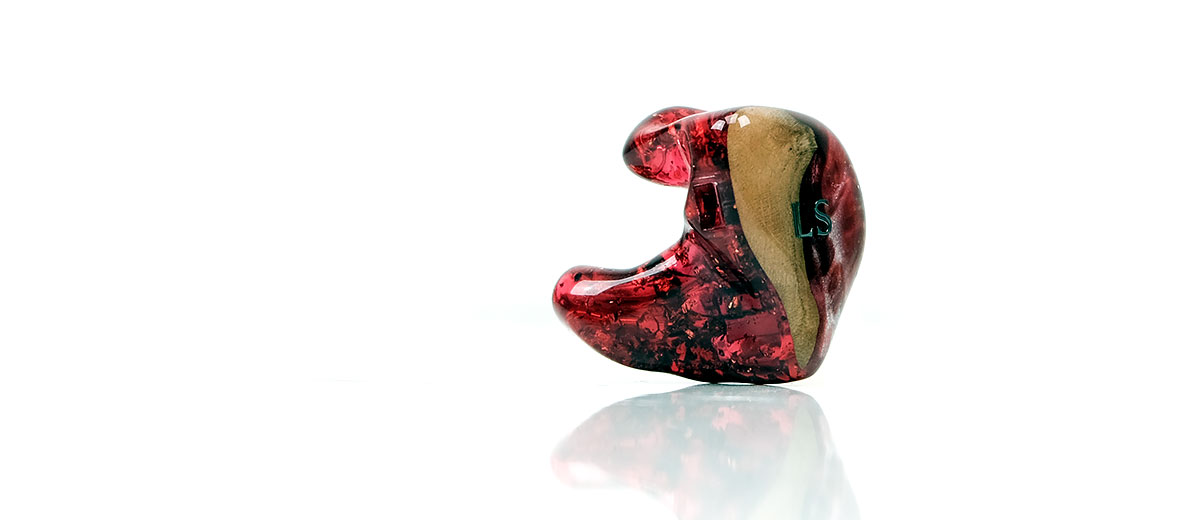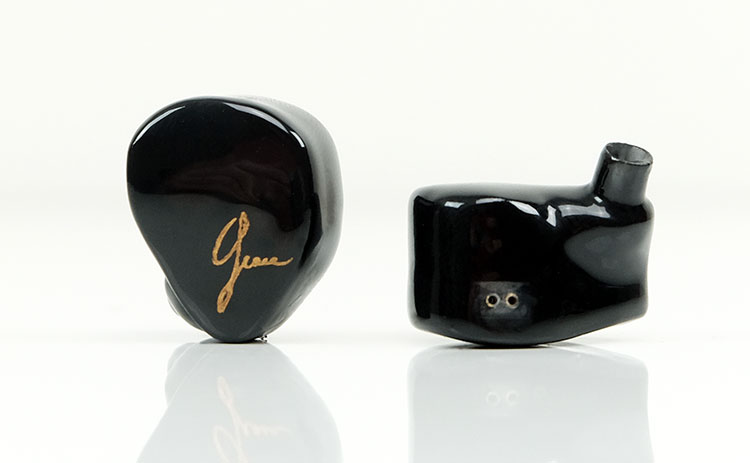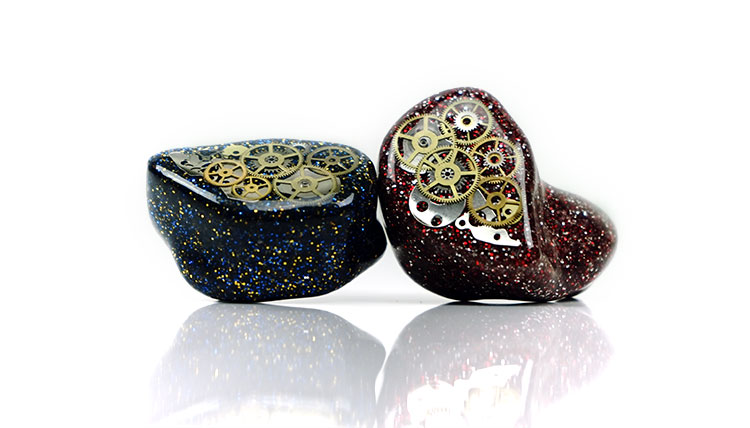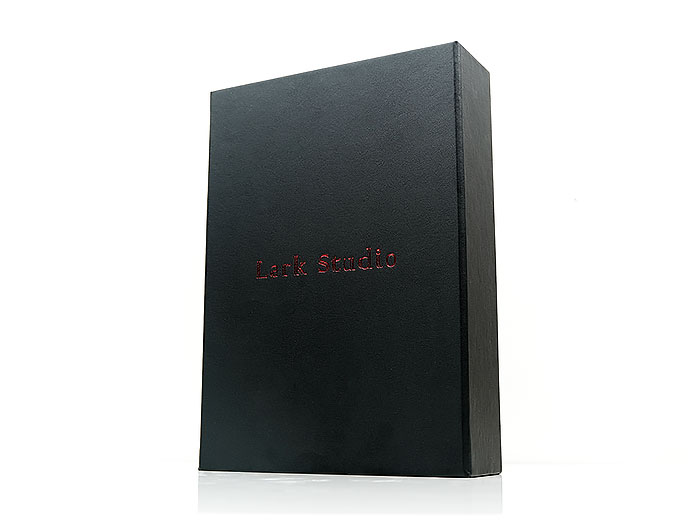Matchability
Efficiency
The LSXC is rated at 20Ω and 110dB SPL which means it is fairly easy to drive and not overly sensitive to sources with higher noise floors. It does require a little more current than the likes of the Solaris, Phantom, and Andromeda but much less so than the likes of the Westone ES80. Surprisingly, when compared to the 26.6Ω, 119dB Earsonics Grace, it was the LSXC that sounded the more sensitive to current.
That means you are unlikely to need any additional external amping power to drive the LSXC well. In fact, I actually thought it sounded perfectly fine with a good level of dynamic range from the 55mW x 55mW output of the HiBy R3. The emphasis with the LSXC is more about how well the source can resolve and the type of synergy you prefer.
Noise
Users of the HiBy R6 Pro interested in the LSXC will be pleased to know that you will not detect any background hiss with the LSXC using the stock cable 3.5mm connection. I have always felt that anything around 112dB upwards on the R6 Pro will start showing up hiss, 110dB seems to be fine.
Amped from quality amp signals such as the Lotoo PAW Gold Touch, Sony 1Z and the DX220/Amp 1 you will get an impressively black background using the LSXC with zero noise issues.
Synergy
Synergy with the LSXC is really important, particularly if you are going with the stock cable only. That warm, treacle-like rich and very harmonic overtone of the LSXC performs at its best with a highly resolving and neutral DAP.
You can get away with warmer DAPs like the Sony 1Z because of its excellent clarity throughout, but this is more the exception than the norm. I found DAPs such as the Opus#2 and #3 to be far too soft and lacking in a punch to convince with the LSXC and these are more to the warmer side.
Preferences
My preferred matches with the LSXC included the likes of the Onkyo Granbeat, HiBy R3, the DX220 with Amp 1, and the excellent Lotoo PAW Gold Touch. These sources gave me a fair degree of neutrality and a little more focus on clarity which is something the LSXC works better with for my own personal preference levels. If you need something punchier then the Sony 1Z will work instead.
Lotoo PAW Gold Touch
The Touch pairing, in particular, is about as good as it gets in terms of maxing out the potential levels of clarity from the LSXC. That slight treble forwardness in the LPGT signature works a treat with the smoother richer presentation of the LSXC delivering a better harmonic balance than the Opus variants.
iBasso DX220
The DX220 with Amp 1 is not that far behind either. It has excellent resolution and a neutral timbre that pairs well with the LSXC but it has that slightly softer or wetter attack compared to the LPGT that doesn’t sound as crisp and clean right at the top-end. That’s something I tend to look for, especially with the stock cable on the LSXC.
HiBy R6 Pro/R3
I had similar thoughts also on the R6 Pro pairing with its slight top-end rolloff. Thank God for MSEB DSP on the R6 Pro. Adding a little coolness and crisp/air you can tweak a little more odd-harmonic infusion into the LSXC signature for as much bite as you like.
The R3 gives you a similar attractive neutral timbre with a nice black background but it is not as resolving as either the DX220 or the Touch. Still, if your budget is tight this is an excellent pairing for synergy at a fraction of the cost.
Select Comparisons
Westone ES80
$1899
Technical
The ES80 is an 8-driver custom monitor but priced marginally higher than the LSXC. The ES80 is purposed for reference monitoring and pitched as having a fairly linear signature as a result. Certainly, a contrast to the warmer sounding LSXC signature.
Build
The 3D build of the ES80 is beautiful. They use a hybrid of silicone and acrylic to produce a unique surface treatment that dulls the shine but increases the comfort. It is quite a bit deeper than the LSXC so it does stick out of the ears a bit more. However, it is slightly lighter and more comfortable in the ear.
The silicone flex materials nozzle of the ES80 has an advantage over the LSXC in terms of a seal. The warmth of your ear canal triggers mild expanding properties that close any gaps over a period of time to produce a much better seal than hard acrylic. And it shows with the ES80 blocking out a lot more external ambient low-frequency noise than the LSXC.
Cables
Westone cable solutions are very good. They use MMCX connectors and supply no less than 3 cables as stock. The first two are EPIC Westone creations designed for comfort and ease of use but not possessing great clarity or dynamic range.
The additional ALO Audio Reference 8 type cable is much better than those 2 cables. The Reference 8 is an 8-wire design 4-conductor SPC design encased in a braided translucent FEP jacket using heat shrunk memory tubing. It provides a livelier sound than the stock LSXC cable though physically I find it a little stiffer and more microphonic.
The PWAudio Saladin with the LSXC Splendor is much superior to the Reference 8 cable physically though it does deliver a little more neutrality than the lively Ref 8 on the ES80.
Performance
The ES80 is a little bit more linear or ‘reference’ sounding than the warmer and more intimate LSXC. The ES80 might have a slight bump in warmth to prevent it from sounding sterile or overly analytical but it doesn’t have the dips and bumps that the LSXC has.
The LSXC has more of a mid-bass bump and lower-mids warmth so instrumental timbre is that bit thicker and richer as well being more forward sounding. Vocals also have more of a sustained elevation on the LSXC compared to the more neutral positioning on the ES80. There is a slight bump on the ES80 so vocal presence is very good but it is not as prominent as the LSXC.
As a result, the LSXC is the more intimate sounding for mids, the more euphonic and perhaps attention-grabbing whereas the ES80 opts for a bit more openness as well as the better accuracy or realism in its timbre.
The ES80 doesn’t seem to have the same level of upper mids dip as the LSXC but both show good lower treble energy, especially when you switch the LSXC to the Saladin cable which gives the treble a much need lift. Overall, the ES80 treble might be the more accurate of the two with a little more extension and sparkle whereas the LSXC has a bit more body and the more relaxed sounding.
Earsonics Grace
€2000
Technical
We decided to throw in the Earsonics Grace universal into the mix because the tuning of the two seemed quite similar when I did the initial First Contact feature on the LSXC.
The Grace is an all BA 10-driver monitor. All the drivers are custom tuned specifically for Earsonics by Knowles using an HQ 3-way passive crossover with an impedance corrector. The configuration for the Grace is two full range vented drivers for the low-end, four smaller midrange BA drivers for the mids and four BA drivers for the highs.
Build
No contest really in terms of design and fit. A good custom will always fit and seal better than a good universal monitor. I will say one thing though, with the right tips, the Grace can seal really well and it is a lot smaller than the LSXC. However, I do find the LSXC to be the more comfortable of the two in the ear. Logically so, give the LSXC is an exact match.
Cable
The Grace is terminated with a flush 2-pin socket designed for ‘over the ear’ wearing. It is also packed with a fairly standard Plastics One type intertwined black 1m cable with a right-angle gold-plated 3.5mm stereo jack.
The cable has a nice low-noise supple build with a black non-transparent jacket and 3.5mm TRS jack termination. However, that’s about as far as it goes for positives. It simply cannot compete with the stock 24AWG copper wire of the stock cable on the LSXC, not even close in terms of dynamic range. And it cannot hold a candle to the resolution and clarity of the PWAudio Saladin which trumps them both.
Performance
Aural memory is a tricky thing because on testing we do find some differences between the two monitors. Now broadly speaking, both are in the warmer than neutral camp. However, the LSXC with the stock cable is just that bit warmer and richer sounding. There are a few reasons for that.
The first is the amount of ‘dip’ in the lower-mids FR on the Grace which is just a little more aggressive. Whilst I would contend that the Grace has a bit more sub-bass power and some good mid-bass warmth it is not as warm or prolonged as the LSXC. The LSXC also retains a bit of amplitude into the lower-mids which brings that additional warmth into the lower-mids. The Grace, in comparison, pushes instrumental back a little and sounds marginally more neutral with slightly more instrumental separation. Notes are not quite as soft sounding.
The second it the upper mids tuning with the LSXC showing more of a dip and the Grace more of a peak. Combine this with a bit more of an upper treble peak and again, there is a touch more odd-harmonic bias and snap in the Grace percussion and higher-pitch tuning. The LSXC remains euphonic and wetter in tone with slightly less air.
The mids on the LSXC are closer with a more forward vocal presence than the Grace. They are also a little richer and thicker sounding which I like for vocal performances at times. Both have a bump around 1-2k but the Grace bump is much narrower and dips from 2-4k whereas the LSXC stays elevated to 3k. As such the mids on the Grace are cleaner but not as engaging for vocal performances compared to the LSXC.
Saladin
With the LSXC and the PWAudio Saladin cable, you get a much cleaner and more open sound. You also get a better lower treble presence and a harmonic balance closer to the Grace’s timbre. Much less softness in the LSXC tuning with the Saladin.
What I love though most is how the Saladin doesn’t mess around with the vocal positioning so it still sounds forward but now much more accurate to my ear. The Grace’s vocal presence is not as convincing compared to the Saladin infused LSXC pairing.
Empire Ears Phantom
$1799
Technical
The Phantom is a 5 proprietary Empire balanced armature driver Custom monitor with a configuration of 2 Low, 1 Mid, 1 High, 1 Super High using their 5-Way synX Crossover Network. Its pricing is just marginally higher than the 10 Ba driver LSXC which goes to show the driver counts matter little these days in where companies believe their product positioning should be.
Build
The build quality on both are impeccable however I do find differences in the comfort and seal due to the slightly thicker and longer nozzle of the Phantom. The LSXC is a little more comfortable with slightly less ear canal pressure and a marginally smaller build.
The Phantom’s nozzle goes a little deeper and applies a bit more outward pressure on the canal. Therefore, the Phantom blocks out low-frequency ambient noise a bit more than the LSXC but it is not quite as supremely comfortable due to that additional pressure. Both use a horn design but the Phantom’s horn design is a bit more aggressive with a deeper bore inset than the LSXC.
Cable
The Phantom uses the Effect Audio Ares II aftermarket cable as stock. This is a supple, low microphonic build quality, and an attractive and very supple translucent PVC jacket. The braided wire is a 26AWG 4-wire multi-size UPOCC Litz copper strand geometry.
The stock cable on the LSXC is a slightly larger 24AWG and also made from a pure copper wire but its TPE jacket is slightly stiffer and it is not as quiet as the Ares II. Both are finished with similar carbon fiber weave barrels though the stock LSXC options are a little slimmer or lower profile.
I would say the ARES II is a little more neutral in its presentation compared to the warmer stock cable on the LSXC but neither are as good as the very transparent and neutral sounding PWAudio Saladin from the LSXC Splendor package.
Performance
We decided just to go straight with the Saladin cable for comparing these two. The stock cable LSXC is just too soft to compete with the Phantom.
Both of these play slightly north of neutral when it comes to warmth primarily due to fairly accentuated low-end and a long slow mid-bass to lower-mids drop that brings that warmth with it. As such their level of depth and power is reasonably similar though I would give the edge to the Phantom for lower-mids instrumental and male vocal prominence. Especially if below 1k in pitching.
Where the LSXC deviates is in the mids from 1-3k. The Phantom is quite neutral in this range whereas the LSXC is much more forward. Vocals that pitch close to this area or on it will found more forward and richer on the LSXC. The Phantom pulls them back a bit more and at times lack a little bit of power and presence, especially for female vocals.
Having said all that, I find the imaging on the Phantom just bit more precise and the staging a bit wider. Perhaps due to the dropped mids the upper mids and higher pitched imaging notes have more focus.
Treble on the Phantom is a little bit more amplified around the 8-10k marker and you will not find that much of a 4k dip either. Percussion has more of a snap to it on the Phantom with additional sparkle and air. The LSXC has more of a lower to mid-treble emphasis on the 5-8k range so it might sound a little meatier but with a little less sparkle.
Our Verdict
I am glad Lark Studio sent me the two cables to get a taste of the Splendor package versus the stock package. For the additional $200 the jump in performance is very satisfying and worth the money. If you already have a decent SPC or a higher-end silver 8-wire then just grab the stock package and save the $200. Either way, you will hear the LSXC at its optimal performance level.
And what is that level? At its heart, the LSXC is musical, north of neutral in terms of warmth, and big on vocals with a sweet tone to its instrumental timbre. The top-end is a little relaxed but with the Saladin cable, you get a decent odd-harmonic overtone to keep everything sounding reasonably accurate.
This is not a harsh monitor, it is built for very long listening sessions on neutral sources and ideally suited to good quality rock and female vocal soloists. It is a fun sound and a more than a healthy competitor for the Earsonics fans who might want to try something a bit different.
Lark Studio LSXC Specifications
- TECHNOLOGY Balanced Armature
- DRIVER COUNT 10
- DRIVER CONFIGURATION 3 Bass + 4 x Midrange + 2 Treble + 1 Super Tweeter
- AUDIO RANGE 20Hz~20kHz
- IMPEDANCE 20Ohm
- SENSITIVITY 110dB
- PRODUCT WEIGHT 35g






